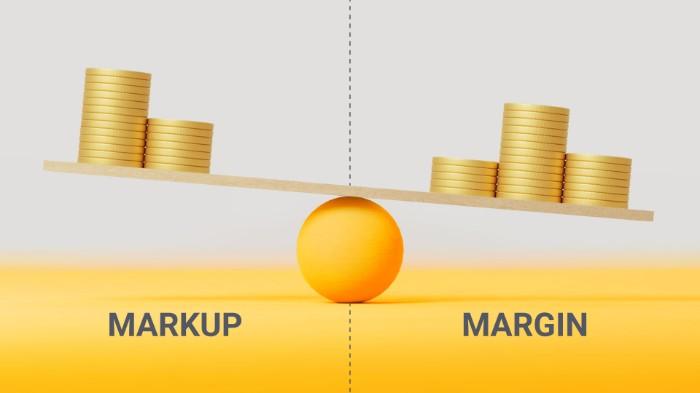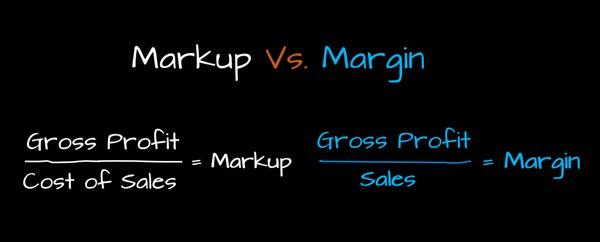Profit Margin vs. Markup: What's the Difference?
Aug 05, 2024 By Kelly Walker
Advertisement
Are you an entrepreneur, business owner, or retailer who wants to boost profits for your company? Before making any decisions about pricing and discounts, it is important to understand the distinction between profit margins and markup regarding financial strategies.
A thorough understanding of how each formula works will help ensure that your pricing practices are sensible and profitable. In this blog post, we'll highlight the differences between profit margin vs. markup so you can find the best approach for pricing items in your business.
Define profit margin
Profit margin is a measure of profitability that calculates how much out of every dollar earned in revenue turns into profit. To calculate it, divide the net income by total sales and multiply the result by 100 to get a percentage. For example, if your business earns $100 in net income for every $1000 in sales, you have a 10% profit margin.
Define markup
Markup is a pricing strategy that allows businesses to set prices for their products or services based on their cost plus an additional amount to cover overhead expenses and make a profit. To calculate markup, divide the cost of the product or service by one minus the desired profit margin expressed as a decimal. For example, if you want to make a profit margin of 25%, then the formula is cost/(1-.25) = markup.
Difference between profit margin and markup

The main difference between profit margin and markup is that profit margin measures how much you make compared to your revenues, while markup measures how much you charge compared to your costs. Profit margin is a percentage of net income relative to revenue, while markup is the amount added to cost to arrive at the final price.
In summary, profit margin and markup are two different pricing strategies businesses use to sell their products or services. While profit margin measures how much you make from every dollar earned in revenue, markup measures how much you charge compared to your costs. With a better understanding of the differences between profit margin and markup, businesses can make more informed decisions about their pricing strategies.
How to Calculate Profit Margin
Profit margin is the amount by which revenue from sales exceeds costs. In other words, it measures how much money a business makes after accounting for all its costs and expenses. Calculating profit margin is straightforward: subtract all costs of producing the product or service from total revenue, then divide that figure by total revenue. This calculation will give you a percentage that expresses the profit margin as a percentage of total revenue.
For example, if a business has $1,000 in sales and costs $800, the profit margin would be 20%. To calculate this figure, we subtract $800 from $1,000 to get the profit ($200), then divide that number by the total revenue ($1,000). Gives us a profit margin of 0.2, or 20%.
How to Calculate Markup
Markup is an alternative measure of profitability that measures the difference between what it costs to produce a product or service and how much you sell it for. To calculate markup, take the price of the product or service and, subtract its cost, then divide that number by its cost. This will give you a percentage expressing how much more you sell the item than it costs to produce.
For example, if it costs $4 to produce a product and you sell it for $5, your markup would be 25%. To calculate this figure, we subtract $4 from $5 to get the markup ($1), then divide that number by the cost ($4). This gives us a markup of 0.25 (or 25%).
Benefits of Understanding Profit Margin and Markup

Understanding the difference between profit margin &markup is important for any business owner. It will help you make more strategic pricing decisions and better understand how much money your company makes from each sale. By tracking profit margin and markup, you'll better understand which products are profitable and which need adjustment.
Profit margin is especially useful for understanding long-term profitability trends, as it reflects the amount of money left over after all expenses have been paid each accounting period. Markup is more useful for short-term pricing decisions, as it helps you determine your selling price to make a certain profit.
Knowing the different terms and how they are calculated will give you greater insight into your business operations and help you create more accurate financial forecasts. With this knowledge, you can better assess the potential profitability of new products or services and make smarter pricing decisions. Understanding profit margin vs. markup can help you maximize your profits and make more informed business decisions.
FAQs
What is a 20% markup in the margin?
Incidentally, a 20% markup is equivalent to a 20% margin. This means if you have an item that costs $100 to produce and sell for $120, the markup will be 20% (the additional $20 divided by the cost of goods), and the margin will also be 20%.
What is better:-margin or markup?
It depends on the situation. Profit margin is better for long-term profitability trends, while markup is more useful for short-term pricing decisions. The profit margin will be more helpful if you need to assess your overall profitability over time. If you want to make a certain profit on an individual product or service, the markup will be more beneficial. Both metrics are useful for understanding profitability and optimizing your pricing strategy.
Is it better to use markup or margin?
Incidentally, a 20% markup is equivalent to a 20% margin. This means if you have an item that costs $100 to produce and sell for $120, the markup will be 20% (the additional $20 divided by the cost of goods), and the margin will also be 20%.
Conclusion
Highlighting the differences between profit margin and markup may seem daunting, but it doesn't have to be. Understanding the ins and outs of how companies make and set prices can help you decide the best approach for your unique business. Think critically and assess your pricing strategies to ensure you set realistic prices and make informed decisions. By considering profit margins versus markups, you can give yourself more flexibility with your pricing models while keeping profits in mind.
Advertisement

Kelly Walker Nov 29, 2024
Void Transaction Definition
12548

John Davis Aug 03, 2024
Deal With Medical Bills on Your Credit Report
45303

Kelly Walker Oct 12, 2024
Fidelity National Home Warranty Review
76429

John Davis Nov 09, 2024
Is Gross or Net Income Better for Calculating Mortgage Affordability?
26947

Kelly Walker Dec 24, 2024
The Difference Between Payday and Installment Loans
84653

Rick Novak Sep 04, 2024
Exploring Your Student Loan Repayment Choices
6236

Kelly Walker Aug 05, 2024
Profit Margin vs. Markup: What's the Difference?
86886

Rick Novak Oct 06, 2024
The Basics of Substitution Swaps
3564